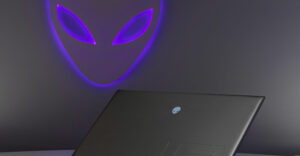
Desperate to gain more traction in the video gaming market, where it trails behind rivals Nintendo and Microsoft, Sony on Tuesday demonstrated a new motion-sensing controller to an audience of gamers.
The demo at the Electronic Entertainment Expo (E3) in Los Angeles showed off a device about the size and shape of a television remote control with a colored ball at one end.
The device appears to work in a way similar to a Nintendo Wii controller — the user moves it around, and the object appearing in the game screen moves the same way.
The controller can be used to represent any object within the virtual environment; a sword, a flashlight and a pencil were among the items shown in the demo.
The Guts of the Device
The controller has a variety of buttons and internal sensors. Technical details may be gleaned from a document appearing on the discussion forum on NeoGAF. A user going by the handle “gofreak” (with the subtitle “GAF’s Bob Woodward) posted what is purportedly a copy of the patent for the device.
The controller uses ultrasound to determine three-dimensional absolute depth (the distance between two controllers in a user’s hands or in multiple players’ hands) from an ultrasonic detector, according to the description.
LEDs in the controller provide the absolute two-dimensional (x and y axes) position of the controller, along with information about the controller’s location relative to the user’s body.
Sony’s PSEye (PlayStation Eye) merges the ultrasound and LED inputs, according to the post.
More Technical Info
Sony said the controller is an engineering prototype that can be combined with PSEye for precise control and enhanced gaming experiences. It detects the natural movements of the user’s hands.
The PSEye detects the position of the controller in 3-D, letting the camera project users onto the TV screen so their avatars appear in the game to interact with objects there.
The company did not respond to requests for comment by press time.
View of the Demo
The demo was presented by Sony’s Richard Marks, known as the father of the EyeToy, the PSEye’s counterpart on the PlayStation 2 platform.
One of his colleagues demonstrated the use of the controller, which is used much the way a Nintendo Wii controller is used. The controller provides true 1:1 tracking, Marks said.
For the demo, the controller morphed into a virtual pen that was used to write on virtual paper to demonstrate the accuracy of tracking. That demonstration showed sub-millimeter accuracy in tracking, according to Marks.
Bodies in Motion
Sony’s main video game console rivals Nintendo and Microsoft have also shown off new motion-sensing capabilities.
Nintendo, which launched in 2006 with a motion-sensing controller, has extended its Wii Remote with a hardware add-on called “Wii MotionPlus,” which will fine-tune the console’s ability to sense motion. That device is scheduled for release this month.
Microsoft’s Xbox will perhaps have the most impressive product in the motion-sensing lineup, if its video is to be believed. “Project Natal” is the codename for a controller-free motion sensor it has in development, which it demonstrated at E3 earlier this week.
Natal, according to Microsoft, uses a sensor that combines a camera, a depth sensor, a multi-array microphone, and a custom processor running proprietary software all in one device. No product has yet been delivered, however.
As video game sales begin to flatten, console makers are looking toward new interface technologies to generate excitement — even if few of their new toys have any set timetable for delivery.
“Every time the companies come up with a new game, they up the ante,” Laura DiDio, principal at ITIC, told TechNewsWorld. “The manufacturers are trying to drum up support and create a buzz for their newest games, when they aren’t really offering anything really different.”





















































